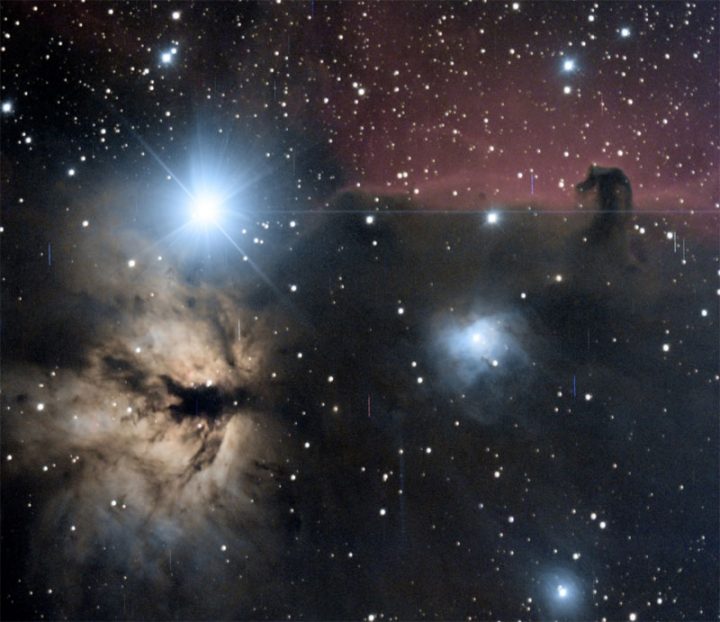Reprinted from the Island Free Press
Mars and Venus will be visible in the southwest sky at sunset during all of February.
Supporter Spotlight
Uranus began the month slightly higher in the skies but you will probably need a good pair of binoculars to see it. Throughout most of the month, it will appear to get closer and closer to Mars. On Feb. 26, you might be able to see both planets at the same time.
Jupiter began the month rising in the east at 11 p.m. Right behind it and slightly to the south, another bright object is rising. Don’t mistake it for a planet. That’s Spica, the 15th brightest star in the night sky.
The bright star in the east at sundown is Procyon. It’s the eighth brightest star in the night sky with a visual magnitude of +0.4. If you look closely with a telescope, you will see it’s a binary system, but Procyon’s companion is much dimmer, with a visual magnitude of +10.80.
Procyon is an ancient Greek word for “before the dog.” It got this name because Sirius, the dog star, rises just after Procyon. Procyon, Sirius, and Betelgeuse, the eastern shoulder star in Orion, are the corner stars of the “Winter Triangle.”

January Highlights
The above image offers four nebulae for the price of one. The Horsehead Nebula is displayed on the right of the page and the Flame Nebula is on the left. In between and below them are two small reflection nebulae, NGC 2023 and HD 38087, surrounding the double star. Although the image makes all four appear close to each other, they are quite far apart. The Horsehead Nebula is 1,500 light years away while the Flame Nebula is only about 1,350 light years away. When you think about 150 light years, it might not sound like a great distance, but that’s 900 billion miles between the two – not the kind of distance you want to drive for the weekend. HD 38087 is relatively close to us at 180 light years but that means it is not even close to the Horsehead Nebula. NGC 2023 is, astronomically speaking, very close to the Horsehead; it’s about 1,470 light years away, which means it could be within 30 light years of the Horsehead – about 180 billion miles.
Supporter Spotlight
I couldn’t help but notice that NGC 2023 and HD 38087 don’t appear to have any common names associated with them. For some reason they remind me of Nags Head and Buxton. Maybe the pair should be called the Outer Banks Nebula.
If these vast distances make you uncomfortable, don’t feel alone. When I started putting these figures together, I had to pause a couple of times to consider them. The following anecdote might make them a little bit more understandable:
Recently, an Earth-size planet was discovered orbiting Proxima Centuri, the closest star to Earth not counting the sun. It’s only 4.37 light years away. You probably remember the great images of Pluto that came from the New Horizons spacecraft in 2015. It took New Horizons 9.5 years to reach Pluto. Traveling at the same speed, 52,000 mph, a similar vessel could get to Proxima Centuri in about 54,000 years. If you have the time and money and could build a spaceship using the same technology, you could reach the Horsehead Nebula in about 6 million years.
Moon Phases:
- First Quarter: Feb. 3
- Full moon: Feb. 10
- Last Quarter: Feb. 18
- New moon: Feb. 26
This story is provided courtesy of the Island Free Press, a digital newspaper covering Hatteras and Ocracoke islands. Coastal Review Online is partnering with the Free Press to provide readers with more environmental and lifestyle stories of interest along our coast. You can read other stories about Hatteras and Ocracoke here.







